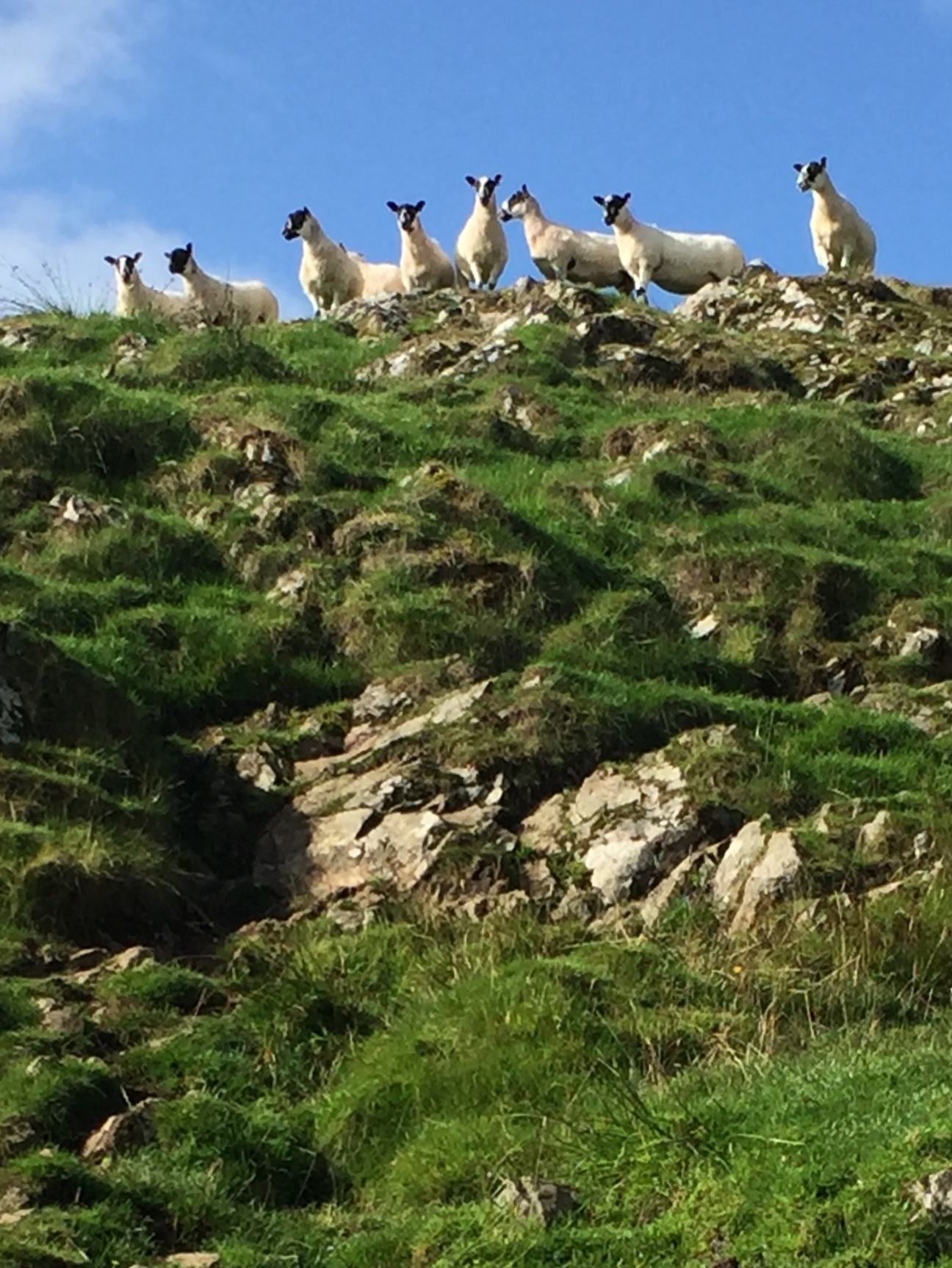 It was bright and sunny when I woke and the fine weather urged me to get out and about. When I’d walked to the northern tip of the island I’d passed a high outcrop of rock marking Iona’s highest point and I could just make out a couple of people by the cairn, so this seemed a good plan for a hike. Again, there was no signpost to guide us from the paved road. Soon we were scrambling up a path that was more of a sheep track than a
It was bright and sunny when I woke and the fine weather urged me to get out and about. When I’d walked to the northern tip of the island I’d passed a high outcrop of rock marking Iona’s highest point and I could just make out a couple of people by the cairn, so this seemed a good plan for a hike. Again, there was no signpost to guide us from the paved road. Soon we were scrambling up a path that was more of a sheep track than a
footpath in places. The makers of the said track eyed us suspiciously, watching our shenanigans with amusement, or was it pity? There was a large cairn on top, and yes, the view was indeed wonderful. Just slightly west of north I could pick out a distant island – possibly Tiree. It was quite wet underfoot and going down I had to resort to my ‘Heather special’ – sliding down on my bottom rather than risk going head over heels on the slippery grass. We had fine views of the abbey far below us and I wondered idly if the monks and nuns ever came to this very spot. I’m sure they must have – “nearer my God to thee.”
By the time we got down to sea level again it was still only 11:30 but we decided on a very early lunch at the Martyr cafe which seems to be perched on the ocean when you’re inside, and retired for an hour before visiting the abbey – this time by daylight. Many of the capitals in the cloister have been newly carved with surprising modern scenes. Several portraits appeared to be African.
For me the highlight was the museum containing the broken remains of several ancient Celtic crosses held in place by ultra
modern contraptions of metal and glass, forming a wonderful contrast to the ancient carvings. All this was highlighted by dramatic lighting looking more like a stunning lighting set for a modern drama than a traditional museum. Some of the grave slabs were carved in the 1300s representing knights of the MacKinnon family, and they were very well preserved. Other satellite chapels had sprung up around the church. One, Michael chapel, was constructed in the 1200s and featured wonderful piscina arches with statues of heads weathered until this look decidedly ghoulish.
I inquired at the bookshop about the writing of the Book of Kells. I’d grown up with an awareness of this illuminated manuscript of the gospels after doing a project about religion and art in high school, and when I was in Dublin earlier this year I’d hoped to see the original book but the museum was closed. Written around the 800s at Iona the book had been taken to Kells, Ireland for safekeeping to protect it from the Viking invasion. Though the Vikings couldn’t read they knew a valuable artifact when they saw one! I saw a poster advertising a talk about this book, starting in an hour, so off I trotted. About twenty people were gathered in the bookstore to hear Jan Sutch-Pickard talk about her sabbatical learning about the making of the book and how she uses the information that she gleaned in her own poetry. I discovered that the blue coloured paint used in the book is made from ground up lapis lazuli (I have a jewelry set of that stone) which could only have come from Afghanistan – in the 800’s! Ultra-marine actually means from ‘beyond the sea, or from beyond these shores.’ Some people believed that the book had  been written by angels, so intricate is the workmanship. THAT would certainly have been from some other world. Jan had also visited the extensive library at Cheetham school in Manchester, which I’ve visited, as part of her research. Apparently ancient books should not be stored on oak shelves, because the oak is a living organism. They should be stored on steel shelving. How dull! This research has resulted in the entire library at Iona being rethought.
been written by angels, so intricate is the workmanship. THAT would certainly have been from some other world. Jan had also visited the extensive library at Cheetham school in Manchester, which I’ve visited, as part of her research. Apparently ancient books should not be stored on oak shelves, because the oak is a living organism. They should be stored on steel shelving. How dull! This research has resulted in the entire library at Iona being rethought.
I headed back passing St Oran’s chapel, the oldest intact structure on the island being built in the 1100s. I wanted to take a look around the extensive organic gardens, the perimeter of which I’d passed several times each day. The gardens are open for anyone to walk through and the produce is for sale to the public, but also used in the kitchens of the 2 hotels. I had been very surprised to see so much fruit on this remote Scottish island and here the boughs of the apples trees were bending low with the weight of their bright red fruit. Rows upon rows of veggies, neatly raised and well weeded, stretched almost down to the pier. Amazing!
I stopped off at the Argyll and ordered a Thistle cider just to be able to sit in the hotel’s garden overlooking the Sound of Mull. After 20 minutes or so the wind grew fierce and
as I headed by to the St Columba Hotel a faint rainbow joined Iona to its big sister. We had dinner in the hotel then strolled down to the Martyr’s cafe for a cup of tea before returning to the hotel to back for the long trip home tomorrow.

All set for dinner
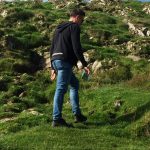
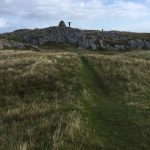
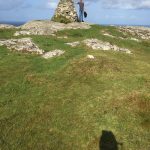

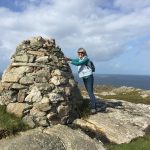
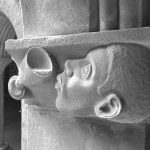
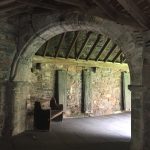
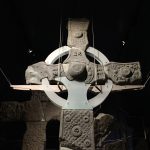

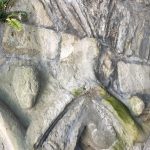
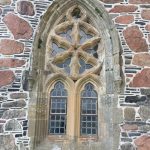
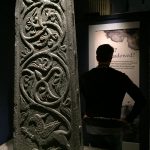
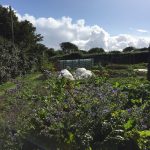
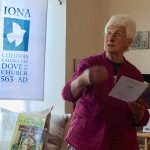

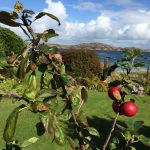
27th August 2018 at 4:45 pm
I’ve got the excellent (full sized) reproduction of the Book of Kells) at home: the next best thing to viewing the original. Thames & Hudson 1974/76: fabulous quality..
You’re welcome to borrow it anytime: trouble is, it’s a fair old weight…
(I’ve just checked it out: it’ll [just]) fit inside my rucksack).
Do you want to borrow it???